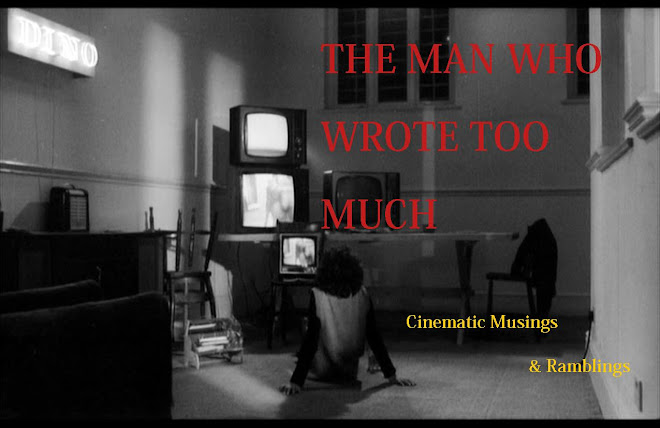As we see the festival organisers and attendees spout their peace will out rhetoric, as well as the humour now evident in their naivety of a music festival as statement of cultural rebellion, there is a sense of melancholy in seeing all this hope and righteousness that would soon waste away (head down to Haight-Ashbury in San Francisco today to see the crushingly gentrified and strung out remnants of the scene).
+1.JPG)
If all the legends were believed, then it would seem that the second half of the 1960’s for American youths was nothing but a big love in of flowers, good drugs and free love, where any problems could be resolved with a harmonious sense of vicissitude. Yet in reality by this point (July 1969) the bubble had burst on the ‘hippie’ ethos; the Vietnam war was at its appalling peak (the horrors of events such as My Lai still fresh in the mind). Many contemporaries were being imprisoned for protests and avoiding the draft. Promoters of the mind expansion ideals such as Timothy Leary were being revealed as frauds. Richard Nixon had ushered in a new era of republican rule following the assassination of Robert Kennedy in the build up to the 1968 presidential elections, and just days before the festival took place The Manson Family committed their famously brutal murders of Sharon Tate and friends, for many signalling a death knell for the idealistic commune family scenarios. We could therefore take the rather pessimistic (but not inaccurate) view of Woodstock as the wild last stand of the ‘free love’ generation.
In fairness whilst Woodstock does not refer explicitly to the wider context of troubles outside the festival setting (other than Country Joe & the Fish’s comic karaoke rendition of scathingly anti-Vietnam war anthem “I-Feel-Like-I’m-Fixin’-To-Die-Rag”), Wadleigh doesn’t attempt to disguise the fact that the festival’s “3 days of peace, love, music” was beset by many problems.
+2.JPG)
Therefore we see torrential winds and rains pounding the site on the first day, turning the site into a virtual disaster zone (which much to the chagrin of the attendees no doubt, had to receive aid from ‘the man’ in order to cope). We see that many of the young attendees weren’t completely at peace with their world, inside they were disillusioned, frantic and just wanting to be accepted for what they were in an America that still looked upon non-conformist lifestyles with considerable disdain.
We also see music wise, that not every performance was a classic. Some of the bands perform way under their standards (Jefferson Airplane), others seem oddly out of place (Sha-Na-Na), and humorously it reveals that the festival’s most celebrated performance (that of Sir Jimi of Hendrix) was only actually witnessed by a small remaining crowd on the last day, with most of the attendees having packed up and left by that point.
There are of course some stunning performances to see, the aforementioned Hendrix performance is as ‘electric’ as the legend goes. At the other end of the guitar spectrum, Richie Havens creates wonders with just an acoustic to hand, and credit must go to Santana’s young drummer who is quite possibly the most amazingly gifted, grunting, gurning, drumming wunderkind I have ever seen.
+3.JPG)
Viewed as a documentary, the film does not attempt to pose or answer any of the wider contextual questions that could have been posed, or even that of why people would want to spend three days together caked in mud. Wadleigh is happy to present an observational account of events, often making appealing use of split screen in order to show interviews and present a wide array of images at the same time.
And it’s these images that give the answers to anyone looking to question this ‘cultural happening’, people were looking for a communication in a world of increasing isolation, even in the eye of the storm, creed, colour, sexual orientation, personal presentation, none of this mattered. Essential viewing and an essential cultural artefact, you dig?

Wow. Well written. I've actually seen this movie and you really manage to capture its essence.
ReplyDeleteThanks very much! : )
ReplyDelete